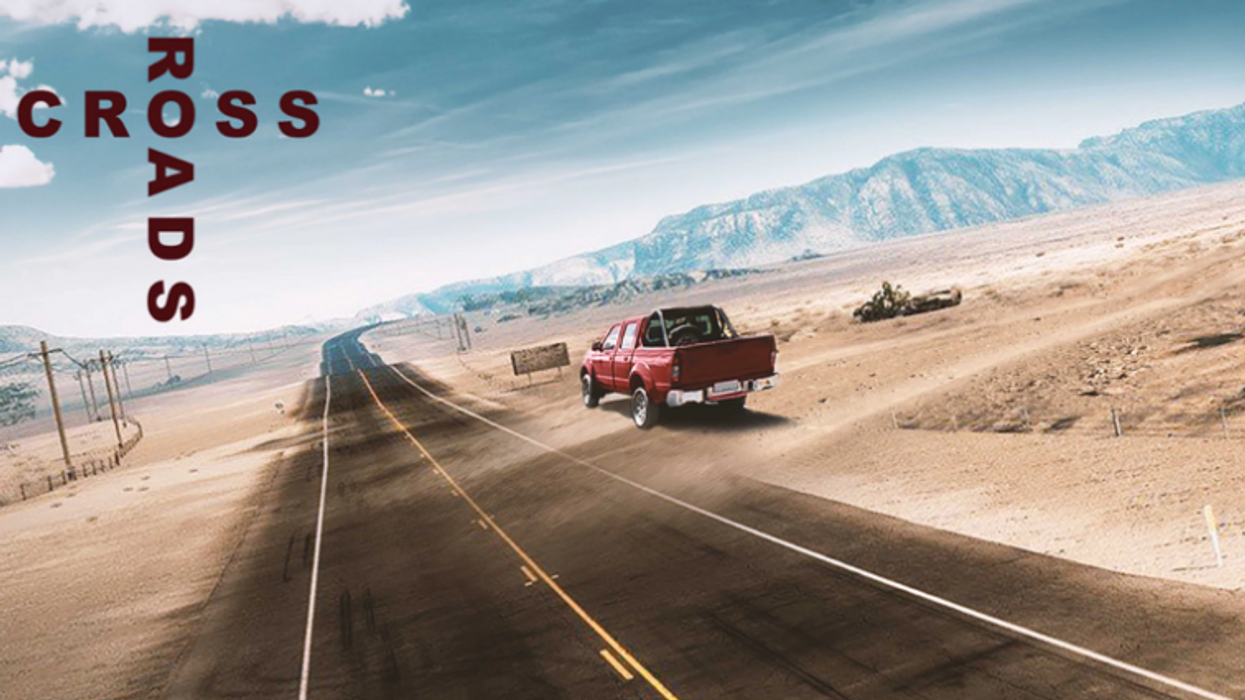'Crossroads': How a Young German Filmmaker Brought His Vision to Life
We dive into the independent filmmaking process with the director of psychological thriller Crossroads.

Originally from Germany, Marvin Nuecklaus has worked in the US film industry for only 3 years but managed to rack up the credits on his resume. He co-produced and edited the Bhutanese feature film Kushuthara: Pattern of Love which is the very first Bhutanese film that entered the US film market with a western actor, Emrhys Cooper. He also directed season 1 of the show This Is LA as seen on KCBS. Just recently he finished editing the remake of the German classic horror film Nosferatu with Doug Jones as Count Orlok.
Nuecklaus long dreamed of coming to the United States and forging his career in the entertainment industry, he's done just that.
His film Crossroads just finished a successful festival run and is now available on Amazon.
Crossroads is a psychological thriller that dives deep into the state of mind of a troubled and abused woman who has to uncover her childhood trauma to live with herself.
We sat down with Marvin to talk a little bit about his creative choices when making Crossroads, because he didn't make this happen without also making creative sacrifices.
No Film School: What inspired you to make this film and how long did it take?
Marvin Nuecklaus: I love watching movies that keep me on the edge, where you’re trying to get a step ahead and really have to look into clues to get a hint but as soon as you think you figured it all out, it turns on you. I wanted to show the so often misused and misunderstood dissociative identity disorder (DID) in a different, more accurate perspective.
NFS: You have two very different visual looks in the film. What was the decision making behind that?
Nuecklaus:For me, both locations played a critical role in my story and I needed to separate the worlds. They represent the state of mind the lead character is in. The desert is endless, abandoned, and no matter how far you’re trying to run, you can’t escape but just run in circles. It’s like a trap. The interrogation room is tiny, claustrophobic. It feels like the walls are closing in on you.
NFS: How was your collaboration with your Cinematographer and what did you shoot Crossroads on?
Nuecklaus: My cinematographer Dominic López was amazing. Since I have a background in cinematography myself, it’s really hard for me to be "hands off" with cameras and lighting. However, Dominic made it unexpectedly easy as he was on his game from pre-production to production. Originally, I wanted to shoot on 35mm and we were talking about using two different sets of lenses for each location. Because of budget reasons, we shot the film on a Red Epic Helium and Ultra Primes. The red raw gave us enough latitude in post to at least emulate a Kodak print and the Ultra Primes gave us a beautiful bokeh and soft roll offs.
NFS: So you said you edited and colored the film yourself? Is that something you typically do?
Nuecklaus: Yes and no. I’m very particular when it comes to editing. I usually edit in Premiere as I really enjoy the workflow, the adobe dynamic link functionality and Adobe’s progressive thinking in terms of improvement. While Avid is and probably will be the flagship in editing for a while, I believe the new generation of filmmakers tend to work with Premiere simply because it’s closer to our intuition when it comes to using a software which is more drag and drop based.
As far as coloring goes, I ended up doing the color myself simply because we couldn’t afford what I wanted. When we shot our desert scenes in Lancaster, the grass was literally green which I absolutely couldn’t stand. This required extensive keying and masking which takes hours and hours. As an indie filmmaker, you have to wear many hats and this is a classic example. I was inspired by Roger Deakin”s color palette from No Country for Old Men for the desert and for the interrogation room I used Se7en as a reference.
All coloring took place in DaVinci Resolve which is, in my opinion, the most powerful software when it comes to color.












